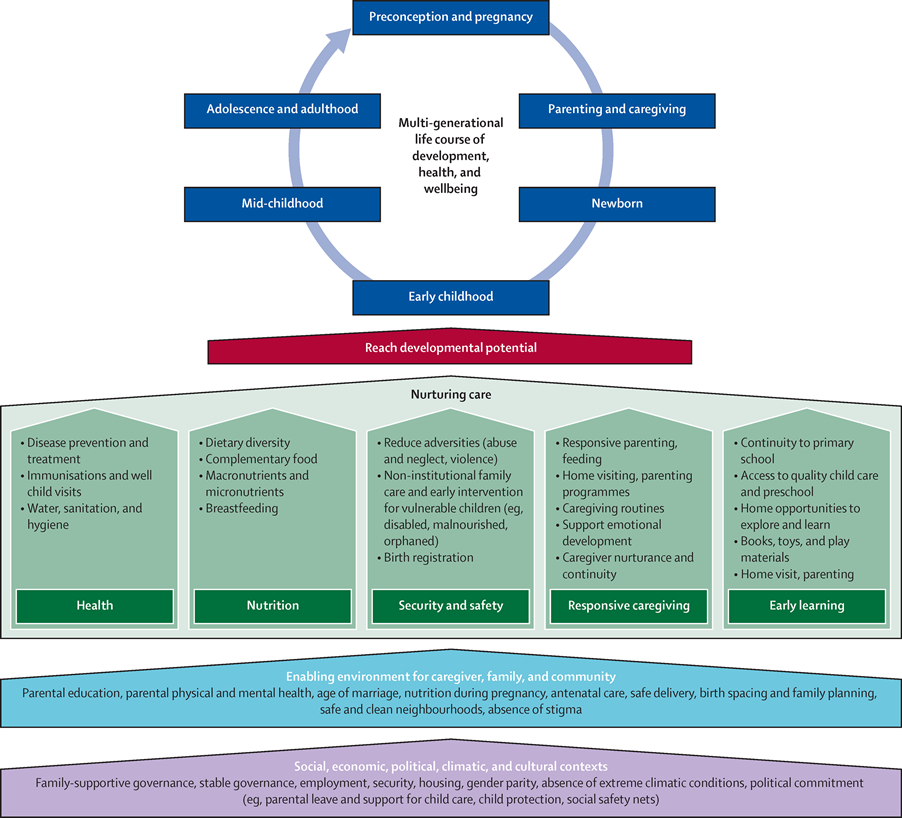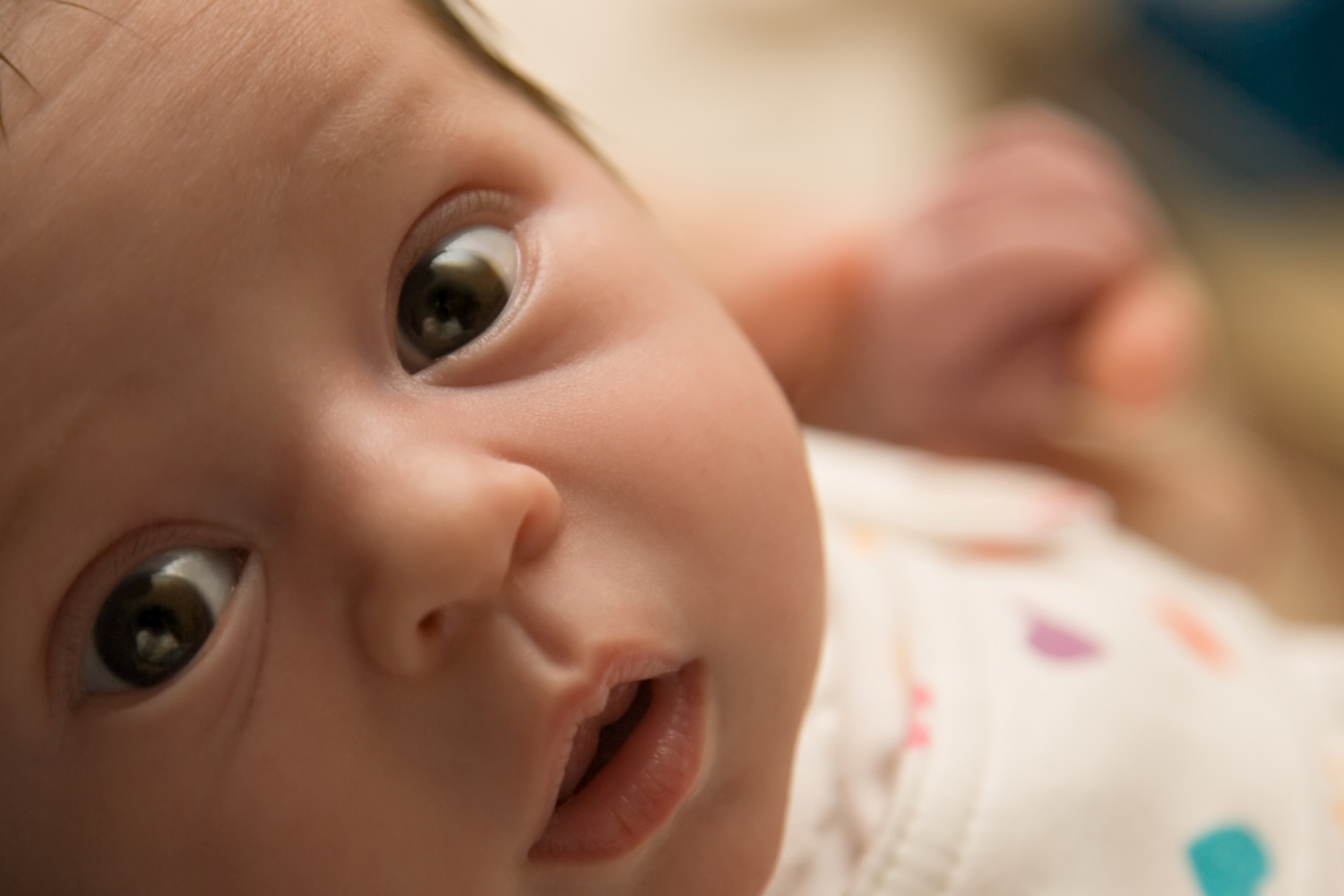Early childhood development coming of age: Science through the life course
Introduction
Series paper 1 | Early childhood development coming of age: Science through the life course
Early childhood development programmes vary in coordination and quality, with inadequate and inequitable access, especially for children younger than 3 years. New estimates, based on proxy measures of stunting and poverty, indicate that 250 million children (43%) younger than 5 years in low-income and middle-income countries are at risk of not reaching their developmental potential. There is therefore an urgent need to increase multisectoral coverage of quality programming that incorporates health, nutrition, security and safety, responsive caregiving, and early learning. Equitable early childhood policies and programmes are crucial for meeting Sustainable Development Goals, and for children to develop the intellectual skills, creativity, and wellbeing required to become healthy and productive adults. In this paper, the first in a three part Series on early childhood development, we examine recent scientific progress and global commitments to early childhood development. Research, programmes, and policies have advanced substantially since 2000, with new neuroscientific evidence linking early adversity and nurturing care with brain development and function throughout the life course.
Figure: The effects of contexts, environments, and nurturing care through the multigenerational life course

Key messages
-
The proportion of children younger than 5 years in low-income and middle-income countries at risk of not attaining their developmental potential because of extreme poverty and stunting remains high (43%).
-
The accumulation of adversities, beginning before conception and continuing throughout prenatal and early life, can disrupt brain development, attachment, and early learning. Developmental delays are evident in the first year, worsen during early childhood, and continue throughout life.
-
Despite substantial progress in early childhood development research, programs and national policies since 2000, services are of varying quality with uncoordinated and inequitable access, especially for children younger than 3 years.
-
Children’s early development requires nurturing care – defined as health, nutrition, security and safety, responsive caregiving, and early learning-provided by parent and family interactions, and supported by an environment that enables these interactions.
-
Coordination, monitoring, and evaluation are needed across sectors to ensure that high quality early childhood development services are available throughout early childhood and primary school, up to the age of 8 years.
-
Action at global, national, and local levels is needed to increase political commitment to and investment in early childhood development.
Reprinted from The Lancet, Vol 389; Authors: Prof Maureen M Black, Susan P Walker, Lia C H Fernald, Christopher T Andersen, Ann M DiGirolamo, Chunling Lu, Dana C McCoy, Günther Fink, Yusra R Shawar, Jeremy Shiffman, Amanda E Devercelli, Quentin T Wodon, Emily Vargas-Barón, Sally Grantham-McGregor; Early childhood development coming of age: Science through the life course. Pages 77-90, Copyright (2017), with permission from Elsevier.
JOIN THE CONVERSATION
For breaking news and to stay connected, follow us on social media. Sign up to get our E-News delivered straight to your inbox.


